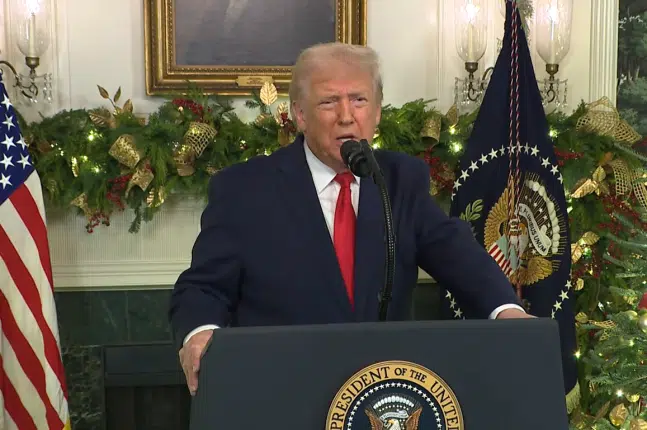
President-elect Donald Trump announced on Nov. 12 the creation of the Department of Government Efficiency (DOGE), headed by Tesla, SpaceX and X.com owner Elon Musk and Vivek Ramaswamy, which will exist “outside of government” but will serve an important function monitoring and offering recommendations to the President and the White House Office of Management and Budget for ways to optimize the expenditure of federal taxpayer dollars by the executive but also with what is allocated at the legislative level.
Since 1980, the gross national debt, now $35.9 trillion, has grown 8.8 percent a year on average, breaking largely from its postwar trajectory of 3.5 percent average a year from 1946 through 1979. (During World War II, from 1940 to 1945, it grew an average 30 percent a year). Debt is incurred when expenditures exceed revenues, resulting in the issuance of U.S. treasuries to borrow the difference.
The spending itself is broken into two categories, mandatory spending, which comprises of items like net interest on the debt ($889 billion in 2024), Social Security ($1.45 trillion), Medicare ($839 billion), Medicaid ($567 billion) and so forth, all coming in at $5.05 trillion, comprising nearly 73 percent of the $6.9 trillion total budget.
The other $1.9 trillion is the so-called discretionary spending for all of the departments, agencies and the 3 million non-military personnel, presumably the focus of Musk and Ramaswamy’s efforts, with a view towards reducing redundant personnel, reforming the federal contracting process, rebuilding antiquated systems and eliminating unnecessary programs and regulations — a complete optimization and modernization of the federal government.
After that, on the mandatory side of the ledger, DOGE presumably would want to reevaluate eligibility for the government’s safety net programs but also to identify areas of waste, fraud and abuse, eking out whatever savings present themselves.
The greatest savings, however, could come from not spending cuts per se, but the return on investment for the government’s $7.3 trillion of intergovernmental holdings of U.S. treasuries — i.e. the trust funds — that at the moment only earned an average interest rate of 4.1 percent, and an effective interest rate of 2.4 percent in 2024, according to the Social Security administration.
That’s not a very good rate of return in today’s economy, and is barely keeping up with inflation, let alone salvaging the shortfalls in the Social Security and Medicare trust funds, which will dry up completely around 2033 according to the Trustees. The problem is low fertility and demographic decline that has resulted in relatively fewer taxpayers to pay into the system.
Barring a turnaround in childrearing — a generational project at best — that means the most “efficient” means of shoring up the trust funds would not be with tax hikes or deferring retirement age, but in increasing the rate of return for the trust funds.
For example, the federal Thrift Savings Plan (TSP) for federal employees has traditionally earned about 6.8 percent a year. If the same exact model were adopted for Social Security, Medicare and other government trust funds, instead of buying useless treasuries, it could resolve the current deficits rapidly, and instead grow the funds to about $12.5 trillion by 2032. Anyone got any better ideas?
The alternatives, some combination of tax hikes and never letting people retire, combined with the debt still continuing to grow astronomically, are not particularly appetizing.
Just looking at the growth of the national debt, if it were to continue growing at 8 percent a year, the national debt would grow to be about $100 trillion by 2037 alone. In the meantime, the economy’s Gross Domestic Product has only grown by 5.5 percent on average since 1980, and along that continued pace, would only equal about $50 trillion or so.
That would put U.S. debt to GDP of about 200 percent in just a short 13 years. That’s just three more presidential terms. By then the trust funds will be exhausted and who knows what sort of interest rate crisis we might find ourselves in. We’d be on the brink of default by then.
But if anyone can find a way to optimize how the massive federal government allocates resources, when Congress and the presidency have failed for almost a century, perhaps it is Elon Musk and Vivek Ramaswamy’s DOGE.
Trump has set July 4, 2026 as a deadline for DOGE to complete its work, in time for America’s 250th anniversary, but clearly the work to be done is actually long overdue. We’re on borrowed time, but the DOGE could be just the sort of novel idea that can produce a plan for the President’s budget to be submitted to Congress for adoption — before it is too late. Time’s up.
Correction: Debt to GDP at current growth rates would hit 200 percent by 2037, not 2032.
Robert Romano is the Vice President of Public Policy at Americans for Limited Government Foundation.






